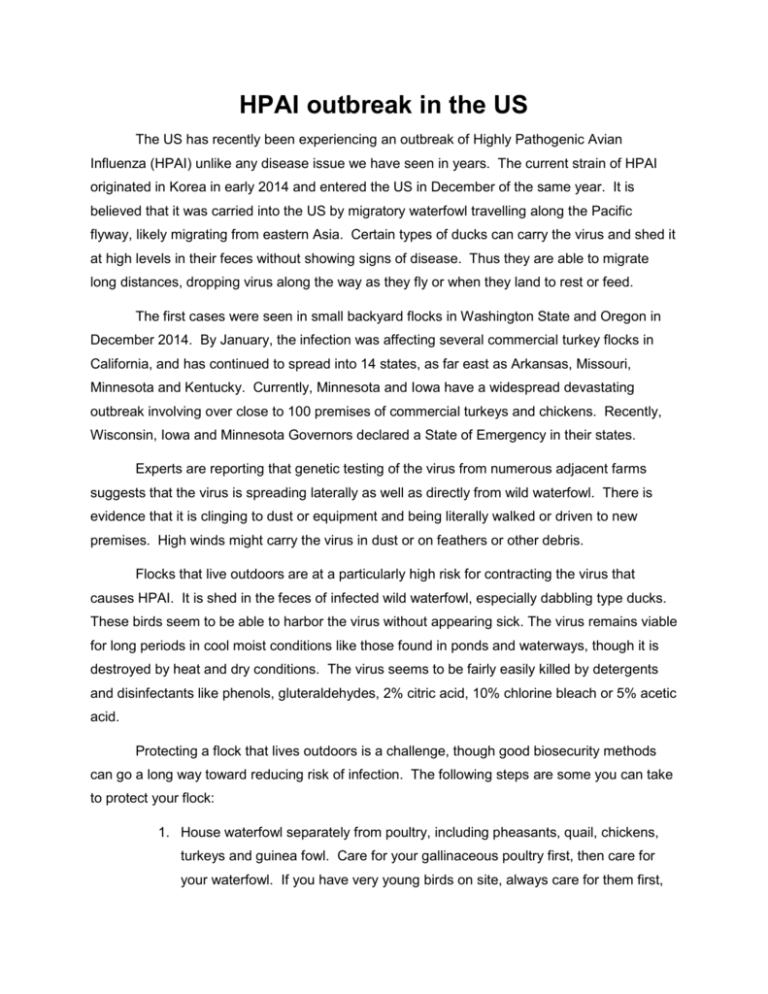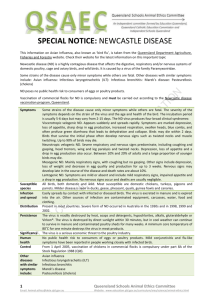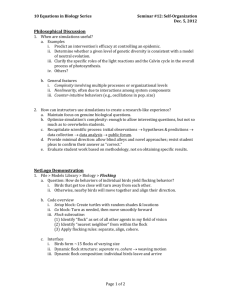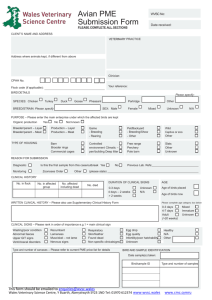HPAI Outbreak in the US
advertisement

HPAI outbreak in the US The US has recently been experiencing an outbreak of Highly Pathogenic Avian Influenza (HPAI) unlike any disease issue we have seen in years. The current strain of HPAI originated in Korea in early 2014 and entered the US in December of the same year. It is believed that it was carried into the US by migratory waterfowl travelling along the Pacific flyway, likely migrating from eastern Asia. Certain types of ducks can carry the virus and shed it at high levels in their feces without showing signs of disease. Thus they are able to migrate long distances, dropping virus along the way as they fly or when they land to rest or feed. The first cases were seen in small backyard flocks in Washington State and Oregon in December 2014. By January, the infection was affecting several commercial turkey flocks in California, and has continued to spread into 14 states, as far east as Arkansas, Missouri, Minnesota and Kentucky. Currently, Minnesota and Iowa have a widespread devastating outbreak involving over close to 100 premises of commercial turkeys and chickens. Recently, Wisconsin, Iowa and Minnesota Governors declared a State of Emergency in their states. Experts are reporting that genetic testing of the virus from numerous adjacent farms suggests that the virus is spreading laterally as well as directly from wild waterfowl. There is evidence that it is clinging to dust or equipment and being literally walked or driven to new premises. High winds might carry the virus in dust or on feathers or other debris. Flocks that live outdoors are at a particularly high risk for contracting the virus that causes HPAI. It is shed in the feces of infected wild waterfowl, especially dabbling type ducks. These birds seem to be able to harbor the virus without appearing sick. The virus remains viable for long periods in cool moist conditions like those found in ponds and waterways, though it is destroyed by heat and dry conditions. The virus seems to be fairly easily killed by detergents and disinfectants like phenols, gluteraldehydes, 2% citric acid, 10% chlorine bleach or 5% acetic acid. Protecting a flock that lives outdoors is a challenge, though good biosecurity methods can go a long way toward reducing risk of infection. The following steps are some you can take to protect your flock: 1. House waterfowl separately from poultry, including pheasants, quail, chickens, turkeys and guinea fowl. Care for your gallinaceous poultry first, then care for your waterfowl. If you have very young birds on site, always care for them first, as their immune systems may not be fully developed. They would have little resistance to any disease organisms carried by older birds. 2. Do what you can to prevent wild waterfowl having access to your flock. 3. For birds in aviaries, keep them under roof if possible, and have shoes dedicated to use inside the aviary. Wild waterfowl feces may have large amounts of the virus, so cover your shoes or use dedicated shoes when entering the aviary to avoid tracking anything inside. 4. Feed your birds indoors so that you do not attract wild birds to your flock. 5. Foot baths can be used to prevent tracking pathogens into your aviary. Some disinfectants require long contact times to be effective, so read the label carefully. No one is likely to stand in a foot bath for 10 minutes, as some disinfectants require for adequate contact time. Most disinfectants are inactivated by organic material like mud or debris on your shoes, so a cleaning step using detergent or soap and water with a scrub brush is a good idea before stepping into a disinfectant foot bath. Always clean first, then disinfect. There are also dry chlorine powders that can be used for foot baths. 6. Stay away from shows, fairs or gatherings of bird fanciers, as it can be possible to return home with more than good memories. If you must attend a gathering, do not enter your aviary until you have showered and put on clean clothes and shoes. 7. Restrict visitors from your aviary unless you are confident they have not had contact with other birds or been on premises with birds, especially waterfowl. Visitors should wear disposable or washable boots to visit your aviary. 8. Do not share equipment with other bird owners. If you must share, clean then disinfect anything you bring on your premises before using with your birds. Experts suggest power washing large pieces of equipment that might be shared, then disinfect, then let sit in heat for several days before using with your birds. The arrival of the heat and dryer weather of summer may be helpful in protecting your flock. It is a good idea to increase your biosecurity efforts through the summer so that you are used to the restrictions by fall when the bulk of migration will begin. If you have concerns about the health of your flock please contact your State Veterinarians office, your local Cooperative Extension office, your local veterinarian or the USDA sick birds hot line (1-866-536-7593) for assistance.








